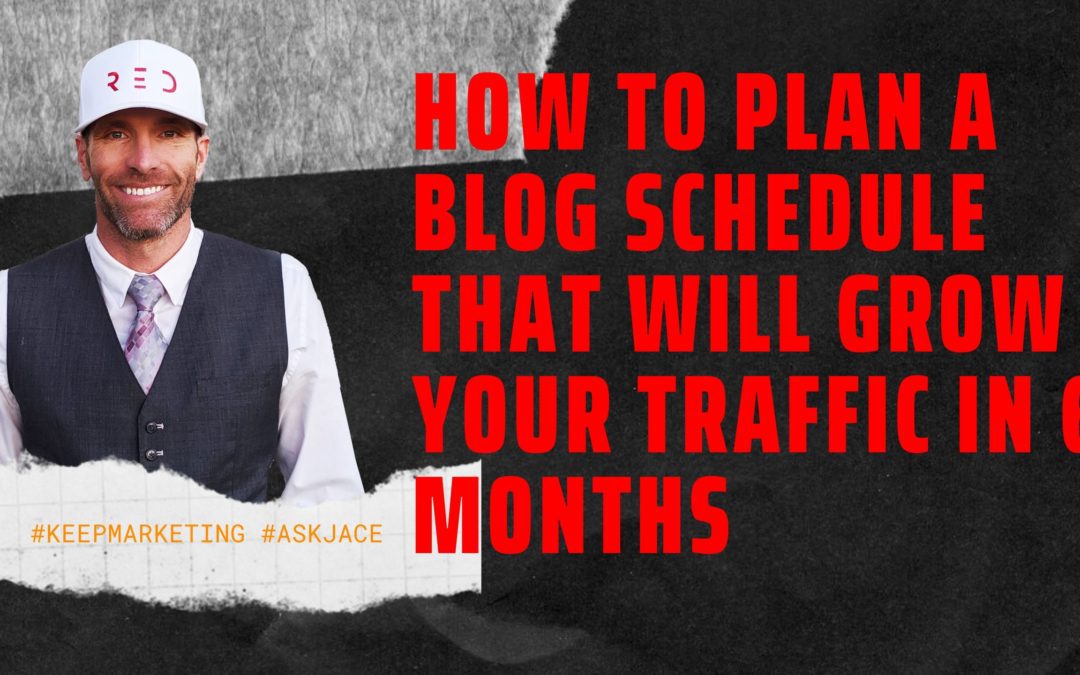Blogging is hard work, so you must make your efforts count.
If you want to use your blog to connect with prospects and customers, I wrote this post with you in mind.
Do you want to know how to plan and publish strategic content on a consistent schedule to grow traffic?
It takes time and effort to complete an editorial calendar. But with a well-planned blog schedule, you can not only make it easy but also maintain it in the long run.
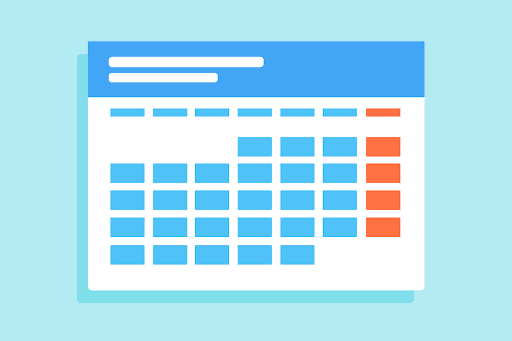
This article will show you how to organize your blog’s editorial calendar to grow traffic in 6 months. We’ll also cover the best practices and “strategy” to help you build a blog that will grow your sales and revenue.
Take these steps to plan your blog schedule in 6 months if you want traffic:
1. Set Clear Goals
Before you open a spreadsheet and save ideas for your calendar, you need to consider your goals.
First, consider your overall business goals. Think about what you want to achieve this year to strengthen your brand.
More brand awareness? More commitment from fans? Build trust and loyalty? Generate more customers, conversions, and customers?
Your blogging goals will help you achieve this business goal. Use the S.M.A.R.T. Goal Setting Template to set realistic and achievable blogging goals.
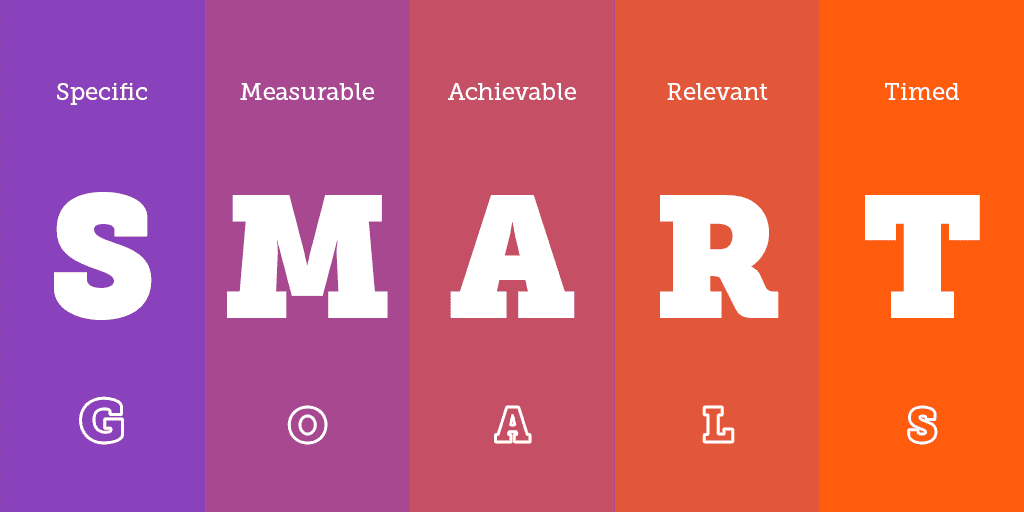
Here are examples:
- Increase your list size by 20% in 60 days by publishing helpful and evergreen content on your blog.
- Increase your blog traffic by 10% in 45 days.
After setting goals, you can focus on creating and publishing the right content to achieve them. You also need to reach out to other blogs to speed up traffic generation.
2. Know Your Targeted Audience
To improve your blog content, you need to know your audience and what their interests and needs are.
Use this information to create more targeted content that leads to results (clicks and clicks, downloads, conversions, shares, etc.).
Think about the different people you’re targeting and create a persona for each audience. Although everyone is different, there are similarities between groups of readers.
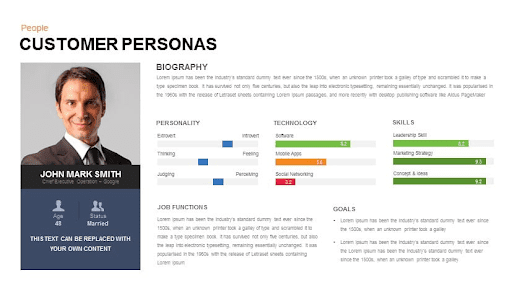
When gathering information from an audience, imagine a clear picture of the person who will read your content. In this way, you can create content based on their needs and interests.
3. Create a Calendar
You have goals and know who you’re targeting. You can now create your schedule.
First, open a blank spreadsheet template in Google Sheets or Excel. Use the first worksheet (or first part) to plan your editorial calendar as a whole. Start with content or author if you plan on having multiple contributors.
Here’s an example from the Content Marketing Institute:

To keep content interesting for your audience, it’s an excellent strategy to mix the types of content you create, not only thematically, but also in terms of content. After all, creating a variety of content is a great way to add ‘interaction’ to your blogging career.
Here are the main types of content you can create for your blog:
- Listicles (e.g., 10 factors to consider when buying a House)
- Opinion article (e.g., What I Learned While Hiking in Australia)
- Product review (e.g., MailChimp Reviews and Comparison)
- Case study (e.g., How We Generated 110% More Organic Traffic in 3 Days)
- Infographic
- Video
- Podcast
- Interview
Interactive content: quizzes, surveys, interactive maps, personality tests, etc.
Depending on your niche, you might want to add other types of content, such as Slide presentations, memes, social media posts, and so on.
4. Generate Ideas for Blog Posts
After creating a framework for your calendar, you need to think of blog post ideas. Along with dozens of interesting topics and other content takes time and effort, but it will save a lot of time in the long-run.
Remember to always keep an eye on your personal goals and audience. This is crucial if you want your content to be strategic and goal-driven.
How to Find Blog Post Topics and Ideas
The first step is to look for popular content that’s been shared by your target audience.
Look at your niche more closely to find out what type of content is shared and which content will produce the best results.
Start with tools like Feedly and Flipboard to track the latest content in your industry. You can subscribe to the best posts in your niche and relevant topics in your industry.
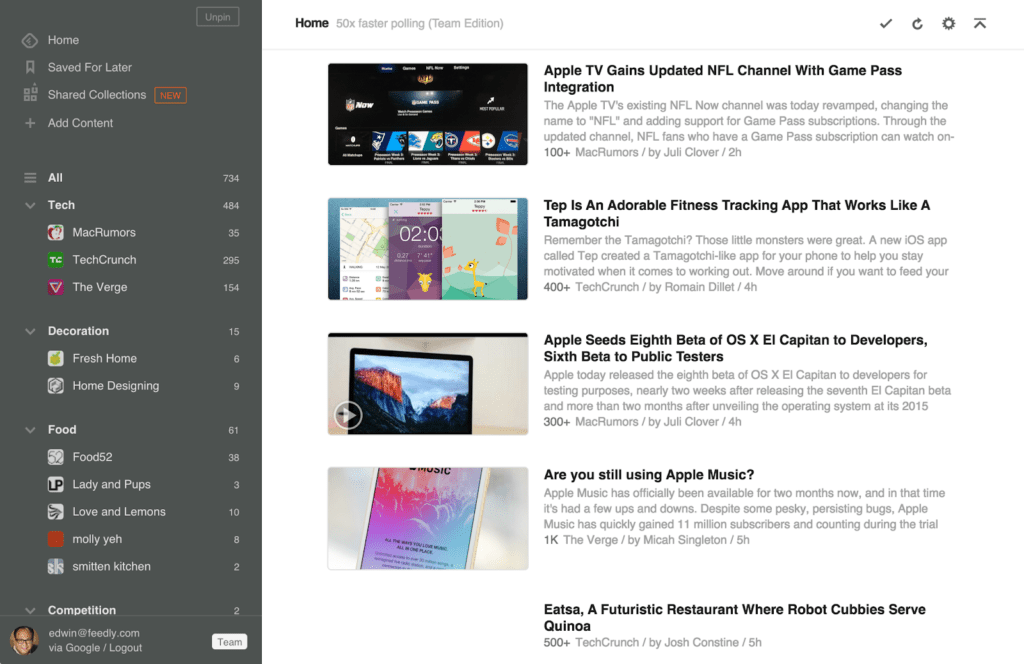
Also, use a tool like BuzzSumo to find the most searched content based on your keywords. With BuzzSumo, you can filter results by date, content type, number of words, and more. You can also order it with the number of social media shares or share it on your favorite social networks.

This information will help you understand what type of content leads to social media sharing (which usually leads to more readers and more traffic to your blog).
- When you see the most compelling content in your niche, consider the following:
- What topics does your niche cover (what needs are met, and what value do they offer readers)?
- What type of title do you use?
- How long were the posts and how were they formatted?
Once you’ve found the right ideas and topics, it’s time to add them to your editorial content calendar.
5. Add Content Ideas to Your Calendar
With previous tips and methods, you should be able to generate dozens of blog post ideas, maybe throughout the year. It’s time to add the ideas to your calendar.
Create your calendar of blog content by topic and at this point, set a deadline for the project and determine who should write it so that the author knows in advance and plan accordingly.
Be strategic when you include these titles in your calendar:
Create a mix of different types of content to serve readers based on the best way they like to consume content online.
If you have a food blog, for example, you can make a mixture of recipes weekly on Mondays and Wednesdays, restaurant reviews on Tuesday, instructions on Thursday posts, and more.
Here’s an editorial content calendar that HubSpot uses:
Publish your best blog posts on optimal days. For example, usage costs usually generate more traffic and engagement in some industries.
CoSchedule conducted research to determine the days to publish blog posts and get maximum page views.
The best day turns out to be Tuesday and Thursdays based on how many shares the post garnered on social media platforms.
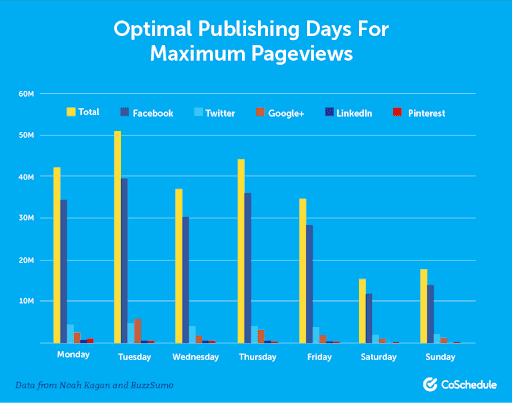
Case studies and pillar content tend to generate more reads and engagement in the small business space.
So post on the days where your audience is most active (or encourage them). Do the same with all other content that adds value to your audience.
6. Write Effective Blog Headlines
Have you seen news headlines before? They’re bold, big, and irresistible!
When users find your content in search results or RSS feeds, the title of your article appears first.
The memorable blog post title stands out and gets more clicks, while dull and boring titles are ignored, and users may skip them.
You must learn how to write better titles for blog posts that grab the user’s attention and get more clicks. According to Brian Clark, founder of Copyblogger Media, “8 in 10 people will read your title.”
Fortunately, some successful bloggers and research labs have been studying headlines for a long time, and you can benefit from the results.
Several studies have shown that the essential building block of compelling titles/headline is emotional triggers such as excitement, surprise, surprise, curiosity, fear, confusion, greed, and so on.
Blogging Strategy and Best Practices
When planning a blog schedule, you also need to have a solid strategy in place. Your blogging strategy will be driven by best practices that successful businesses and industry bloggers have used to grow their blogs and revenue in record time.
It’s time to discover some amazing things you can do to improve your chances of succeeding with a blog.
1). Build a Landing Page to Serve Your Audience
Once you’ve defined your blogging goal for the next 6 months, you have to get started with list building. Yes, you need a contact list of your target audience so that you can keep in touch with them.
That’s why a landing page, which is separate from your main blog is necessary. This landing page will be the gateway to your marketing funnel.
It should appeal to your audience and have an opt-in form so that potential customers can fill out the form to start getting follow up emails from you.
Here’s an example of a landing page that’s attached to the Bloggingwizard blog. Here, the author gives away “The Serious Blogger’s Toolkit” for free.
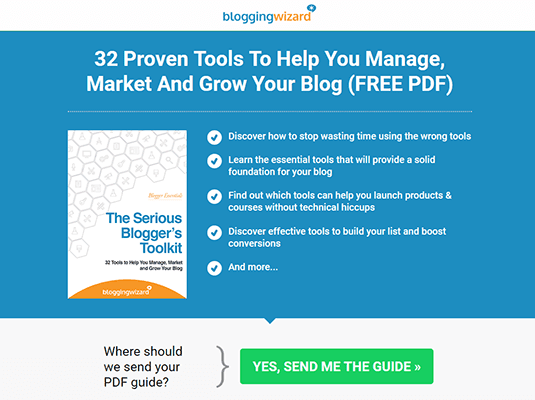
So how does it work?
Well, if you plan on creating an eBook on “How to Lose 20 Pounds in 30 Days,” the first step in the process isn’t to sell the product but to set up a mailing list to caters to people who want to lose weight.
To attract the right people to your email list, you can offer a 3-part free email series, you can call it “3 Secrets to Shedding Excess Fats.”
This will be the first product funnel for building your email list. Use one of the popular email service providers to set up an automatic email — such that when people fill out the form on your landing page, they’ll automatically receive the first email.
This is a free gift that acts as ‘thank you’ for subscribing.
Your landing page will highlight the benefits of the 3-part email course.
Your landing page shouldn’t try to sell the main product but to get the word out about your free course. The visitors who subscribe have indicated an interest in the product.
For your landing page to be effective, keep these tips in mind:
i). Highlight the benefits, not features: There’s no need to explain what the email course entails, just tell users what they will get out of it.
Velaro highlights the key benefits of its offer but gives away a free guide to show the user how the software works.
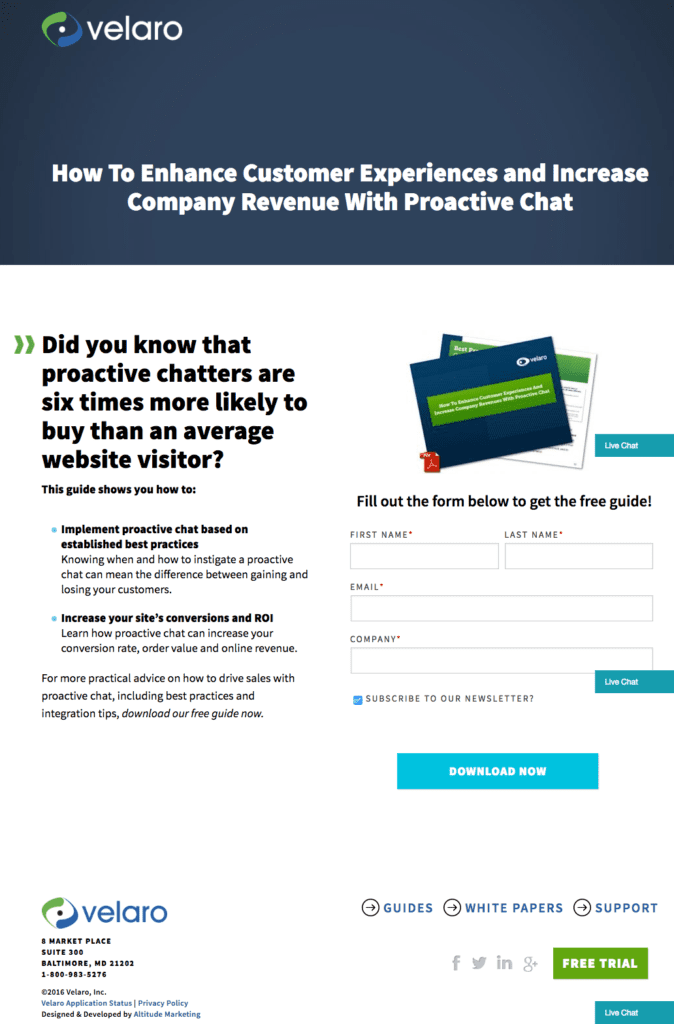
ii). Show the process: How does your email list work. Let subscribers know they’ll get emails from you. You don’t want to surprise them.
iii). Show social proof: If you have endorsements, testimonials, and success stories from your customers, make sure to use them on your landing page. Your potential subscribers will be confident in the fact that you’re legitimate.
As an example, Nutrisystem shows a success story on how Melissa lost 51 lbs with its diet plan.
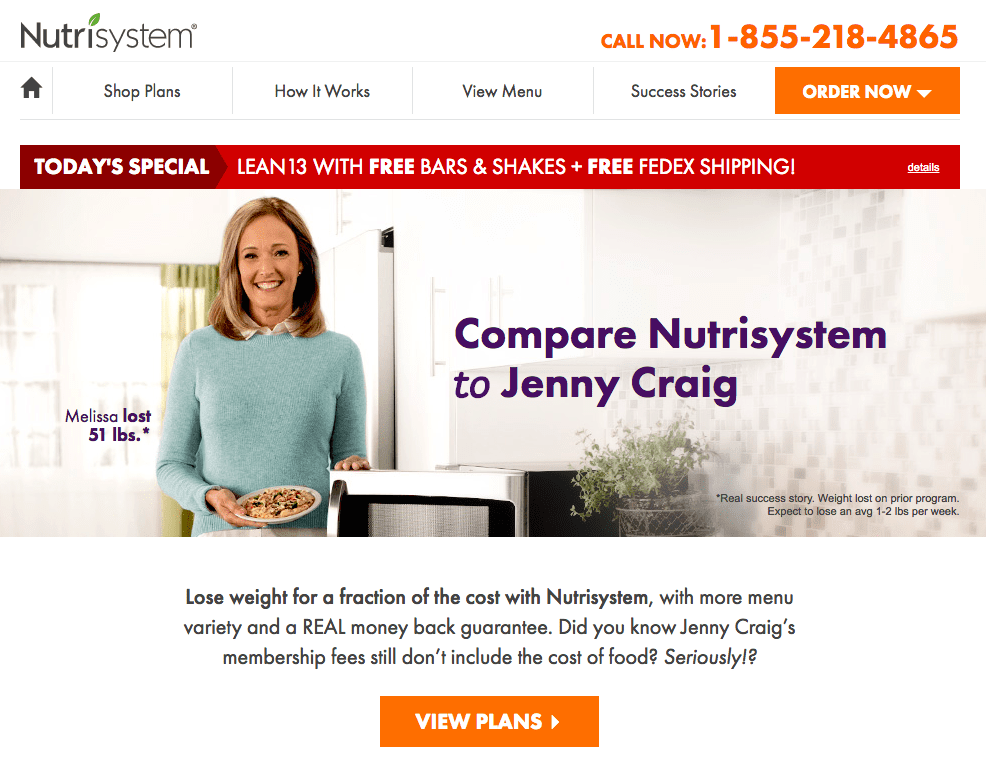
Even if you have comments or tweets from people, those can be used as a form of social proof on your landing page.
iv). Be easily accessible: The best thing you can do to 10X your blogging success is to make your landing pages, products, and important pages discoverable on your blog.
When it comes to your opt-in form, you can use an exit-intent popup to capture users who’re about leaving your page.
The objective of this is to capture as many leads as possible. These potential customers will be on the waiting list to buy your online course, eBook, or software once it’s finally launched.
With that out of the way, it’s time to get traffic to your blog.
2). Drive Hyper-targeted Traffic To Your Blog
So your landing page is helping you capture the email addresses of potential customers already, that’s awesome. It’s time to get some traffic to your blog.
But this time, we’re focused on the right traffic that will make a difference.
This is where most bloggers struggle. Generating the right traffic is hard. You could pay $10 to get 10,000 clicks to your blog, but are these clicks relevant?
Not all traffic sources are created equal. Go after blog visitors that will help improve your bottom line.

If you have a software that will help doctors and nurses, then you don’t have to attract real estate brokers to your landing page. This should be obvious — unfortunately, most bloggers are making this mistake.
I once came across a blogger who offers consulting services to business. During our discussion, he complained that he’s struggling to attract clients. I was concerned because some consultants I know are very successful.
Interestingly, when I checked his blog I noticed that 87% of his content was aimed at consultants and what they can do to get clients. Isn’t it funny that someone who’s in the same boat is advising others on the same issue?

He should have focused his content to attract business owners and marketers who need a consultant. Period!
If you’re going to use paid advertising, for example, think of users who will be coming from paid sources. Google Ads can be good, but you need to narrow down your audience.
If it’s referral traffic you’re most concerned about, then make sure it’s from people who truly are interested in your offer.
3). Contribute to Industry Blog to Drive Traffic
With your landing page offer in mind, you need to start pitching content to other bloggers in your industry.
There are top and high-traffic blogs in every industry. You need to find and get published there with links back to your landing page. You can listen to Sergey Grybniak to learn more.
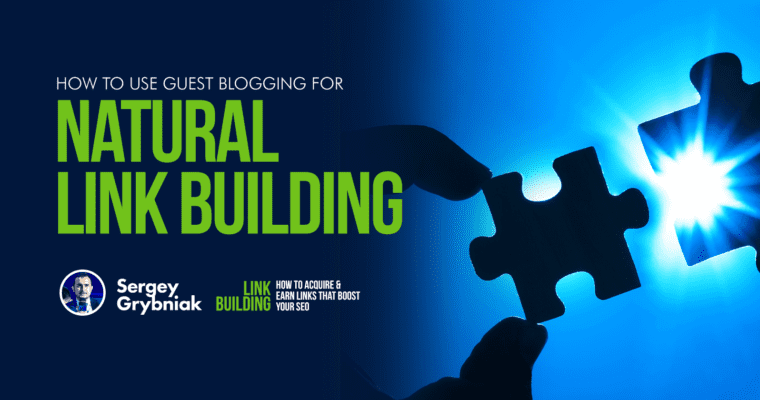
To find these blogs that need guest posts, just enter these search operators in Google:
Keyword + submit a guest post
Keyword + contribute
Keyword + write for us
Note: Replace the ‘keyword’ with your main topic.
For example, parenting + write for us
You’ll find a list of blogs to pitch relevant and useful topics to. Once approved, you can write the article and it’ll be published.
You not only get traffic to your landing page and blogs, but you’ll also get link juice that will improve your organic search rankings and website authority.
Remember that all success comes from other people. Effective guest blogging strategy boils down to building strategic connections and relationships with people. You need the right people to mention, support, and link to your website.
Remember that it’s harder to get the attention of successful bloggers. They’re already killing it, so they don’t need you.
However, you can get their attention by mentioning them in your guest posts. You can give them a shout out on someone else’s blog. This will get them excited because every mention online is vital to their long-term success.
When using guest blogging as a traffic strategy, make sure you point people to your landing page where they can opt-in to your email course or download your free eBook.
Don’t send people to your blog post — it’s a waste of effort because even if they read it, they’ll leave and never return.
Conclusion
An important aspect of your blogging schedule is outreach. Getting the word out is more important than publishing new posts on your blog — especially at the early stages of your blog.
If you must create content on your blog, it must be resourceful so that influencers and industry leaders will be excited to share on Facebook, tweet it, recommend it to your audience, and link it to their posts.
Growing a blog in 6 months is going to involve a lot of creating content. I’d recommend the 80/20 rule.
That is, 20% of the time should be spent creating content for your blog while 80% of your efforts should be spent promoting your blog and content on other sites, social media, paid advertising channels, etc.
Above all, stick to one main topic in the first 6 months. If your blog is about gardening, you can focus on indoor gardening and establish your Expertise, Authoritativeness, and Trustworthiness (E.A.T) in that space.
People will trust you because you’re sharing so much knowledge on one topic — indoor gardening.

